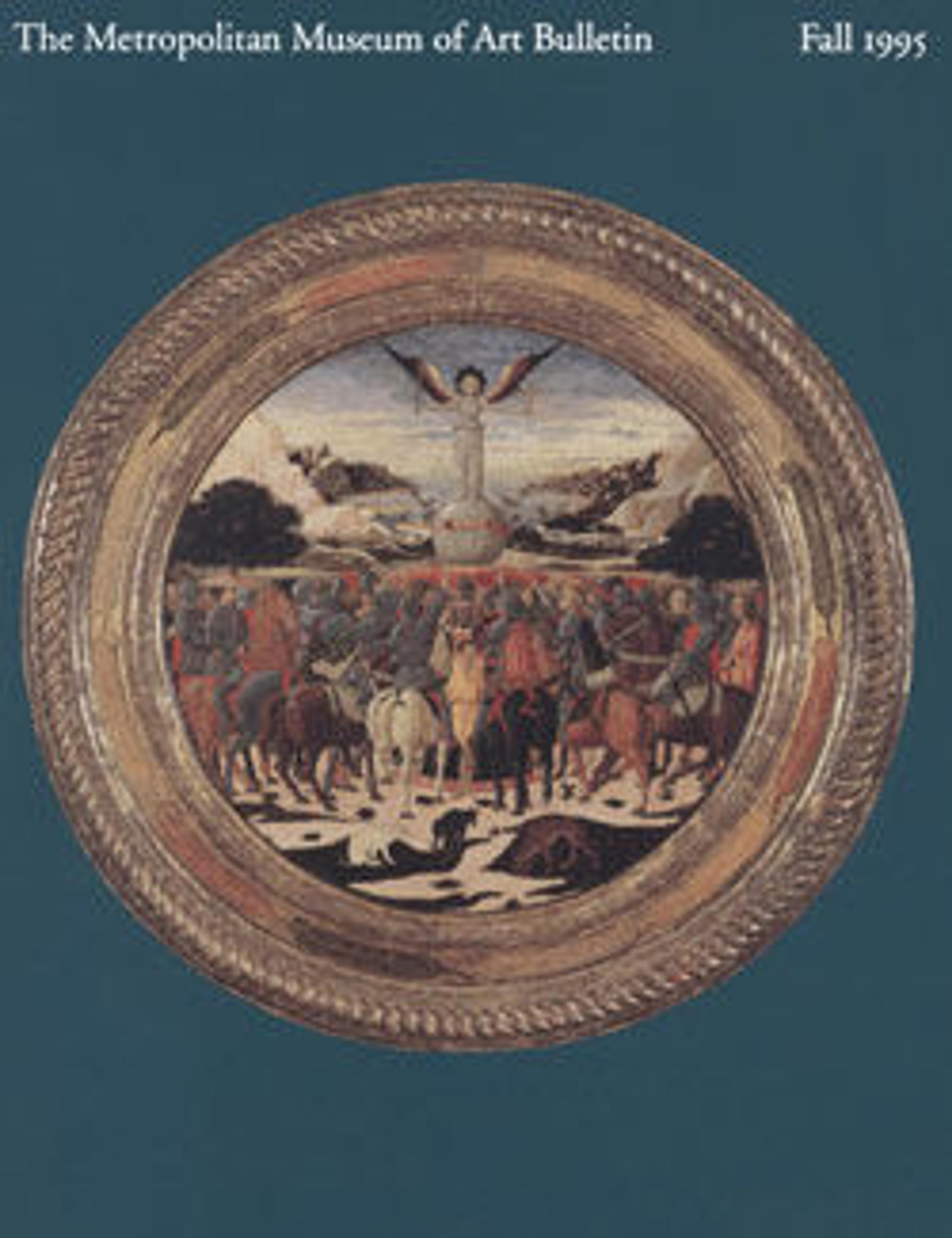The Four Deities of Mount Kōya
The temple-shrine complex on Mount Kōya has served as the headquarters of the Shingon sect of Buddhism since it was established in the ninth century by Kūkai (774–835), who is credited with transmitting the teachings from China. This painting shows the four primary deities of Niutsuhime Shrine, a sacred Shinto site at the base of the mountain. They sit on platforms before trifold screens within a shrine whose entrance is guarded by a pair of lions. The site’s original deities, Niu and her male counterpart, the hunter deity Kariba, are shown at top. Below them are two female deities, Kehi and Itsukushima. At the bottom of the picture are two dogs, one black and one white, who, along with their master, Kariba, are said to have originally guided Kūkai to this remote location.
Artwork Details
- 高野四所明神像
- Title: The Four Deities of Mount Kōya
- Period: Nanbokuchō period (1336–92)
- Date: late 14th century
- Culture: Japan
- Medium: Hanging scroll; ink, color, and gold on silk
- Dimensions: Image: 37 × 16 in. (94 × 40.6 cm)
Overall with mounting: 66 1/2 × 22 1/4 in. (168.9 × 56.5 cm)
Overall with knobs: 66 1/2 × 24 1/2 in. (168.9 × 62.2 cm) - Classification: Paintings
- Credit Line: Purchase, Friends of Asian Art Gifts, 1994
- Object Number: 1994.309
- Curatorial Department: Asian Art
More Artwork
Research Resources
The Met provides unparalleled resources for research and welcomes an international community of students and scholars. The Met's Open Access API is where creators and researchers can connect to the The Met collection. Open Access data and public domain images are available for unrestricted commercial and noncommercial use without permission or fee.
To request images under copyright and other restrictions, please use this Image Request form.
Feedback
We continue to research and examine historical and cultural context for objects in The Met collection. If you have comments or questions about this object record, please complete and submit this form. The Museum looks forward to receiving your comments.
